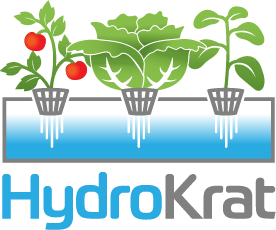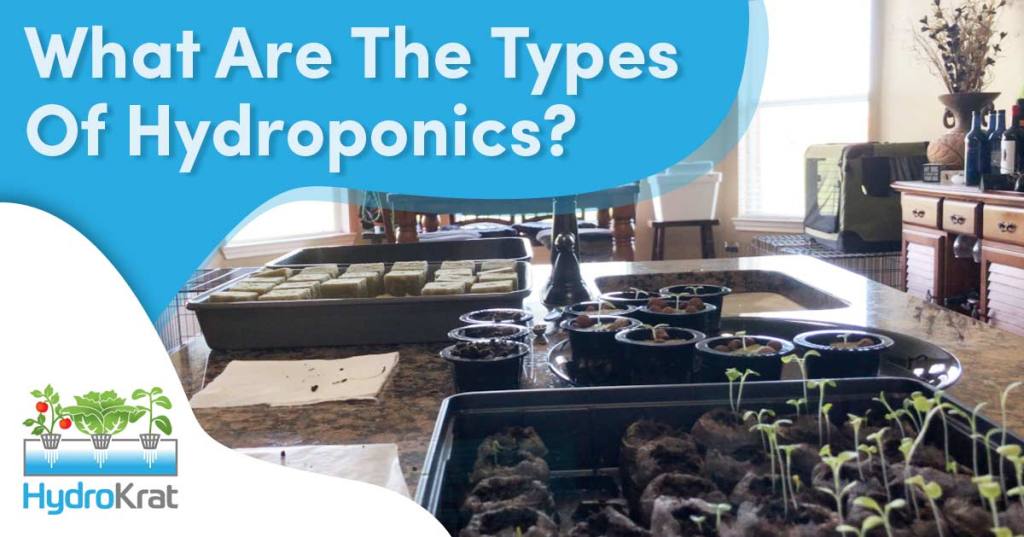Being able to grow your produce and plants using hydroponics is all the rave. People are begging to get in on this new way of safely growing food. With mother nature, becoming more and more agitated with how she’s been treated, learning what types of hydroponics you can use to grow your garden, and help prevent further damage is a wise and thoughtful gesture.
This article will explain what types of hydroponic systems are available, giving you a great starting point on which one will work best for you and your growing needs. We are going to briefly touch on what hydroponics is and why it’s important.
If you are looking for more details, see our other in-depth articles on what is hydroponics?
Let’s jump right into it.
What is Hydroponics exactly?
Hydroponics is a way of growing fruits, and vegetables without the need for soil. Yes, you grow your garden using nutrient-dense water and a few other supplies, which we talk about in a little while from now.
This allows your plants and fruits to grow at an exponential rate. You end up growing a bigger, healthier, and more robust garden. It’s often said by many farmers they have more crops than with soil-based gardening. This makes sense when you think about it. When you grow with hydroponics it’s in a controlled environment, with no soil. So, the potential for soil-based diseases or pests destroying your garden is eliminated.
Why is Hydroponics Important?
When you decide to grow your garden with this method, you are choosing to eliminate the usage of harmful and poisonous pesticides. These pesticides cause damage to the earth, the environment, and our bodies. So, the first important reason is the removal of pesticides. The second is how much more water saved with hydroponic growth. The water used to grow your garden is recycled within your hydroponic system, making it more efficient than traditional farming.
Now that we’ve gone over some important points, let’s move on to learn what are the types of hydroponics used today.
Types of Hydroponic Systems
There are seven types of hydroponic systems that are commonly used today, each of them has different requirements and equipment used and need in order to run smoothly. Below you find the list:
Wick System – This is considered by many the easiest and least expensive. How this works is you have a growing tray that will hold your vegetables or fruits. They are stabilized by a growing medium like rocks or steel wool. The nutrient-rich solution gets pumped from a reservoir right to the roots of the plant that sits in the growing tray. There are no moving parts to this way of hydroponics and is considered the simplest.
Deep Water Culture System (DWC) – Plants in this system are held by a net pot or holding container. These containers are also held in a floating platform just above the solution that feeds the plants. The plant’s roots are exposed to the water and the oxygen being pumped into the water. This is an active system; it has moving parts. Out of all of the active systems, this is the easiest.
Ebb & Flow System – This can be also called flow and drain it suspends your plants above a reservoir of nutrient-infused water, the roots are exposed to this solution, this active system floods the growing tray with the water, then the tray is drained and this process is repeated. This is automated, a pumped controlled by a timer is set.
Nutrient Film Technique (N.F.T) – This offers a growing tray with your plants receiving a continues flow of nutrient-rich solution, the tray has a release that drops the solution out of an exit point recycling the water into the reservoir and using it again. It’s on a loop. No timer and is active.
Drip System – With this type of hydroponic system, the plants are stored in a grow tray, the reservoir with the solution is pumped into a smaller drip manifold that has small drip lines that sit just over the plant. These little drip lines feed nutrient solution to your plant’s roots.
Aeroponics – This is a hydroponic system that suspends your plants in the air and the roots are sprayed with the plants nutrient solution, this is done by pump control and timer. What important here is that the roots are exposed to air, so spraying intervals are frequent, if not the plant roots will dry out.
The Kratky Method – This method requires no electricity or fancy equipment. This can be done with household items, the nutrient solution, and a net pot. This system is not as sophisticated but allows you to grow food if you have plants and are in a location of the world where access to the other options are not available. Great for beginners.
In Conclusion
The types of hydroponics are many, and the options you need to weigh only you can choose. It depends on your goal, and what you feel you can handle. This takes time to learn but is very rewarding for you, and for the planet.
Fortunately, Hydroponics Made Simple is at your service. We offer informative answers to all of your questions about hydroponics. In this article, we talked about what hydroponics is, and why it’s important. We also answered the question what are the types of hydroponics? You discovered there are seven. We talked about what each of them is and how they work.


Recent Comments